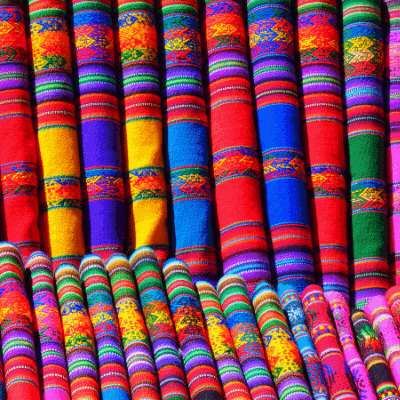Textile design is a fascinating and creative field that combines artistry with technical skills. If you have a passion for fabrics, patterns, and colors, and are considering a career as a textile designer, you may be wondering about the salary potential in this industry. In this article, we will explore the average textile designer’s salary, factors that can influence earnings, and the educational requirements to pursue this career. By the end, you’ll have a better understanding of the financial aspects of being a textile designer.
Understanding Textile Designer Salaries
Before we delve into the specifics of textile designer salaries, it’s important to note that earnings can vary depending on several factors. These factors include experience, location, industry, and level of education. While the salary range can be broad, we will provide you with a general overview of what you can expect as a textile designer.
According to the Bureau of Labor Statistics (BLS), the median annual wage for all types of fashion designers, including textile designers, was $73,790 as of May 2020. However, it’s essential to remember that this figure represents the median, meaning that half of the professionals in this field earn more, while the other half earn less.
The BLS further breaks down the salary distribution for fashion designers, which can give us a better idea of the potential earnings for textile designers. The lowest 10% of fashion designers earn less than $38,570, while the highest 10% earn more than $149,010. This wide range reflects the disparities in experience, reputation, and success within the industry.
Experience and Textile Designer Salaries
When it comes to the influence of experience on textile designer salaries, it’s safe to say that the more experience you have, the higher your earning potential. As you gain more knowledge, skills, and a strong portfolio, you become more valuable to employers, which can result in higher salary offers. Additionally, experienced textile designers may have the opportunity to work on high-profile projects or collaborate with renowned fashion brands, further boosting their income.
How Location Affects Textile Designer Salaries
Location is another crucial factor that affects textile designer salaries. Designers working in major fashion hubs like New York City, Los Angeles, or Paris may have higher earning potential due to the concentration of fashion houses, textile manufacturers, and other industry-related businesses in these areas. On the other hand, textile designers working in smaller cities or rural areas may earn less, as the demand for their services could be lower.
The Impact of the Industry on Textile Designer Salary
The industry you choose to work in can also impact your salary as a textile designer. Textile designers can find employment in various sectors, including apparel manufacturing, textile mills, wholesale trade, and even self-employment as freelance designers. The salary range may differ depending on the industry, with some sectors offering higher-paying opportunities than others.
Educational Requirements for Textile Designers
Education plays a critical role in pursuing a career as a textile designer. While formal education is not always required, it can significantly enhance your skills, knowledge, and employability. Many textile designers hold a bachelor’s degree in fashion design, textile design, or a related field. These programs typically offer coursework in textile techniques, pattern development, color theory, and computer-aided design (CAD) software.
If you’re considering pursuing a degree in textile design, several reputable institutions offer programs that can help you refine your skills and build a strong foundation for your career. New York University’s Tisch School of the Arts, Parsons School of Design at The New School, and the Fashion Institute of Technology (FIT) are renowned institutions that offer excellent programs in fashion and textile design. Additionally, the Fashion Institute of Design & Merchandising (FIDM) offers comprehensive courses and degrees in fashion and textile design.
Online Learning Opportunities for Textile Designers
Aside from traditional degree programs, there are also online courses and programs that can provide valuable training for aspiring textile designers. One notable provider is Yellowbrick, which offers online courses in collaboration with top universities and industry professionals. These courses cover various aspects of the fashion industry, including textile design, and can be a great option for those looking for flexible and accessible learning opportunities.
Conclusion
Textile designer salaries can vary widely depending on factors such as experience, location, industry, and education. While the median annual wage for fashion designers, including textile designers, was $73,790, it’s important to remember that this figure represents the midpoint, and individual salaries can be higher or lower. Gaining experience, working in fashion hubs, choosing the right industry, and pursuing relevant education can all contribute to higher earning potential in this exciting field.
Remember, the textile design industry is constantly evolving, and staying updated with the latest trends, techniques, and technologies can give you a competitive edge. Whether you choose to pursue a formal degree or opt for online courses, investing in your education and honing your skills can help you thrive as a textile designer and potentially increase your earning potential.
Key Takeaways:
- The median annual wage for fashion designers, including textile designers, was $73,790 as of May 2020.
- Factors such as experience, location, industry, and education can influence textile designer salaries.
- Designers with more experience and a strong portfolio have higher earning potential.
- Working in major fashion hubs can lead to higher salaries due to the concentration of industry-related businesses.
- Textile designers can find employment in various sectors, with some offering higher-paying opportunities.
- While formal education is not always required, obtaining a degree in fashion or textile design can enhance skills and employability.
- Reputable institutions such as NYU, Parsons, FIT, and FIDM offer excellent programs in fashion and textile design.
- Online courses, such as those offered by Yellowbrick, can provide flexible and accessible learning opportunities.
- Staying updated with industry trends and investing in education can increase earning potential in the dynamic field of textile design.
Considering a career in textile design? Enhance your skills and increase your earning potential by exploring the FIDM Fashion Design online course and certificate program offered by Yellowbrick. This comprehensive program will provide you with valuable training and insights into the world of fashion and textile design, helping you thrive in this exciting industry. Don’t miss out on this opportunity to take your passion for textiles to the next level. Enroll in the FIDM Fashion Design program today!





